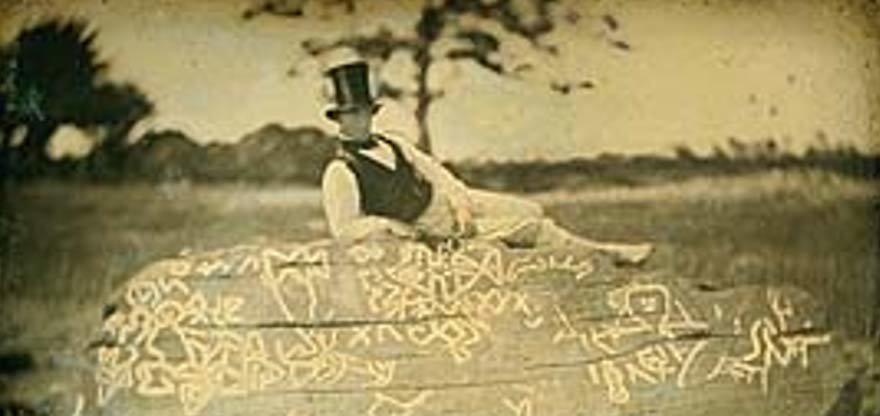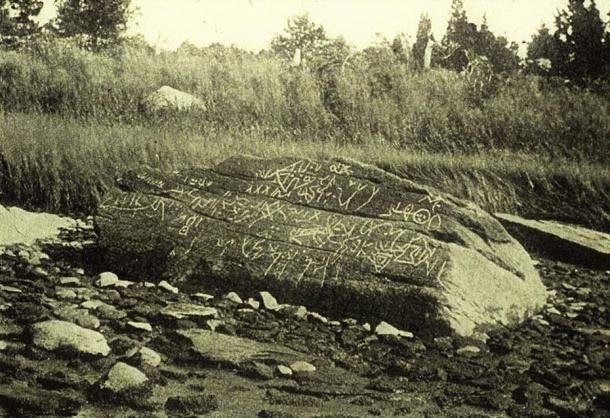
Description of Dighton Rock
The Dighton Rock is a 40-ton boulder that arrived to the Taunton River during the melting of the glaciers during the last ice age. It measures 5 feet (1.5 meters) high, 9.5 feet (2.9 meters) wide, and 11 feet (3.4 meters) long, and is made of gray-brown crystalline sandstone.
What has drawn attention about the great boulder is not the size, but the petroglyphs across one of its six sides. These carvings have been the inspiration for over 1000 books and articles, and the basis for over 35 hypotheses. Although no one can say for certain who was/were the maker(s) of the inscriptions on the petroglyph, it has been agreed that they certainly are very old and very real.
Early History of Dighton Rock
Many scholars say that the mystery of Dighton rock began in 1680, when Reverend John Danforth visited the rock. After seeing it, he decided that the carvings on it were made by Native Americans (the Wampanoag Indians to be exact), and told the tale of a ship arriving, then the battle between the locals and the newcomers. Danforth drew the symbols visible on the top half of the petroglyph (possibly because the rest was under tidal water while he worked) and then wrote:
"It is reported from the tradition of the old Indians, that there came a wooden house (and men of another country in it) swimming up the river Assonet, that fought the Indians and slew their Sachem. Some interpret the figures to be hieroglyphical. The first figure representing a ship, without mast, and meer (mere) wrack cast upon the Shoales. The second representing a head of land, possibly a cape with a peninsula. Hence a golf."
Danforth's drawing was requested by the Royal Society of London in 1732 and is now preserved in the British Museum.
In 1689, Reverend Cotton Mather (who may have or may not have seen the famed boulder himself) wrote that it had a certain undesirable feel about it. He supposed that the engravers were Satanist explorers who arrived and perished in America before the Puritans came along. Mather described Dighton Rock in a sermon, which was later published in The wonderful works of God commemorated [...] He wrote:
"One is that of a mighty Rock, on a perpendicular side whereof by a River, which at High Tide covers part of it, there are very deeply Engraved, no man alive knows How or When about half a score Lines, near Ten Foot Long, and a foot and half broad, filled with strange Characters: which would suggest as odd Thoughts about them that were here before us, as there are odd Shapes in that Elaborate Monument...."
Since then, numerous scholars, amateur archaeologists, students, and tourists have all made the trip to visit the strange rock, and to try to decipher the markings.
Read the rest of the article here.





Looks like a few people have had a go at drawing on the rock. A treasure map? Since the rock has been moved we will never know.
Interesting how everyone who has sketched the glyphs put forward a different interpretation. You see what you need to see.